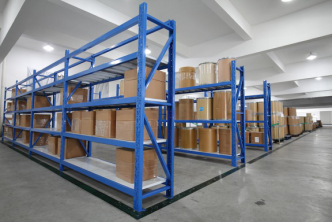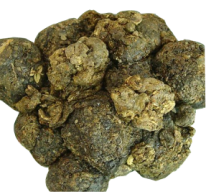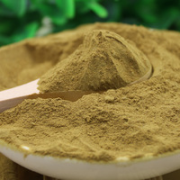18 years Factory offer Organic Propolis powder Factory from Kyrgyzstan
18 years Factory offer Organic Propolis powder Factory from Kyrgyzstan Detail:
[Products Name] Propolis powder, Propolis extract powder
[Specification]
Propolis content 60%,70%,80%
Water-soluble propolis powder 60%,70%,80%
[Gerneral feature]
1. Low antibiotics
2. Low PAHs, can approve to 76/769/EEC/German:LMBG;
3.Organic certified by ECOCERT, according to EOS & NOP organic standard;
4.Pure natural propolis;
5.High content of flavones;
6.Anti-block;
7. Manufacturer supply.
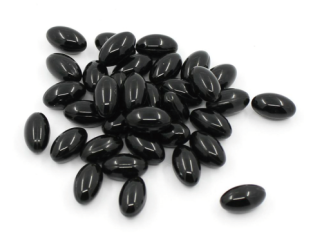
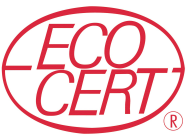
[Packaging]
1. 5kg/aluminum foil bag, 25kgs/carton.
[How to get it]
First, we collect raw propolis from beehives, then extract by low temperature with ethanol. Filter and concentrate, we get the pure propolis block at 98%. Then Low temperature crushing, adding edible and medicinal excipients, finally we get propolis powder.
[Introduction]
Propolis comes from the substance like natural resin, which is collected by the bees from exudates of plants branches and bud the chemical substances of Propolis are found to be various, such as beeswax, resin, incense lipids, aromatic oil, fat-soluble oils, pollen and other organic matter. Studies have shown that the source of propolis resin in material has three types: bees collected plants secreted fluid, secretion in vivo metabolism of bee, and involvement in the process of forming the material.
We can supply Propolis Extract with food-grade and medicine-grade .The raw materiall is came from non-polluting food grade propolis .Propolis extract was made of high-grade propolis. It maintains the propolis effective ingredients during the procedure of extraction under constant low temperature , taking off the useless substances and sterilization.
[Function]
Propolis is a natural product processed by bees mixed with glutinous and its secretion.
Propolis contains more than 20 kinds of useful flavonoids, rich vitamins, enzymes, amino acids and other microelements, etc. Propolis is called “purple gold” owing to its valued nutrients.
Propolis can remove free radical, lower blood sugar and blood fat, soften blood vessels, improve micro-circulation, enhance immunity, anti-bacteria and anti-cancer.
Product detail pictures:

Related Product Guide:
Normally customer-oriented, and it's our ultimate concentrate on for being not only one of the most dependable, trustable and honest supplier, but also the partner for our shoppers for 18 years Factory offer Organic Propolis powder Factory from Kyrgyzstan , The product will supply to all over the world, such as: Ottawa, Johannesburg, Islamabad, Customer satisfaction is our first goal. Our mission is to pursue the superlative quality, making continual progress. We sincerely welcome you to make progress hand in hand with us, and construct a prosperous future together.
WWW.SOAPHOPE.COM
Night Cream by Acure – BUY IT AT SOAP HOPE
Soap Hope brings you Night Cream, an all-natural luxury facial cream hand-crafted by leading maker Acure.
Hydrate and restore your skin while you sleep with this rich night cream, enhanced with Argan Stem Cells and Chlorella Growth Factor. Moroccan argan oil rejuvenates and feeds your skin, leaving it firm and radiant. Chlorella Growth Factor strengthens elastin fibers and collagen, so your skin looks younger, toned and balanced. Ideal for normal to dry skin.
Acure facial care products are made with all-natural, food grade ingredients. Their formulations are designed to provide the most dramatic results while building and protecting skin.
INGREDIENTS
Organic Curoxidant Blend (Organic Euterpe Oleracea (Acai) Berry, Organic Rubus Fruticosus (Blackberry), Organic Rosa Canina (Rosehips), Organic Punica Granatum (Pomegranate), Organic Calendula Officinalis (Calendula), Organic Matricaria Recutita (Chamomile), Fair Trade Certified™ Organic Aspalanthus Linearis (Rooibos), Prunus Armeniaca (Apricot Kernel) Oil, Persea Americana (Avocado) Oil, Vegetable Glycerine, Prunus Dulcis (Sweet Almond) Oil, Glyceryl Stearate (Vegetable Derived), Cetyl Alcohol, Simmondsia Chinensis (Jojoba) Oil, Glucose (Sugar), Glucose Oxidase & Lactoperoxidase (Milk & Sugar Enzymes), Organic Chlorella Pyrenoidosa (Chlorella Growth Factor), Organic Oenothera Biennis (Evening Primrose) Oil, Argania Spinosa (Argan) Oil, Hypericum Perforatum (St Johnswort) Oil, Marrubium Vulgare (White Horehound) Stem Cell Culture, Echinacea Stem Cell Culture, Lactobacillus/fermented Resveratrol Extract, Organic Argan Oil, Coq10, Olive Leaf Extract, Lavandula Officinalis (Lavender) (Essential) Oil, Citrus Limonium (Lemon) Oil, Xanthan Gum.
THE MAKER
Acure is a family owned and operated company founded on sustainable principles to provide the highest quality fair trade, natural and certified organic personal care products.
Kristy Guerra founded Acure as a way to honor her grandmother, who battled breast cancer for over 10 years. She wanted to help raise money for breast cancer research and awareness while also providing products that promote healthful living and a greener planet.
Acure is founded on three principles:
1. Acure For Your Skin – All Acure products are made from the purest, fair trade, natural and certified organic ingredients. Simplicity is the key to their product formulations. In keeping each ingredient as close to its natural state as possible, Acure delivers products that provide visible, more potent results.
2. Acure For The Planet – Sustainability impacts every decision Acure makes. All packaging is recyclable and made from PET, the safest and most widely recyclable material. All boxes are FSC certified with 80% recycled material, 20% sustainably harvested material. All Acure products are biodegradable and will not pollute our waterways once they wash down the drain.
3. Acure for A Cure – In addition to the Soap Hope profit investment program, for each product sold Acure donates one dollar to partner charities that help fight breast cancer. Each day, women are bombarded by harmful chemicals in cosmetic products. Some of these, such as parabens (one of the most widely used preservatives in conventional personal care products), have been directly linked to breast cancer. Acure Organics wants to help eliminate exposure to toxic chemicals in cosmetics and help educate them on the benefits of food-grade, organic ingredients.
Acure is a full line of Body Care and Skin Care products made from all-natural, fair trade certified, and organic ingredients. All products are free of parabens, sulfates, phthalates, synthetic fragrances, petrochemicals, and animal by-products.
THE MISSION OF SOAP HOPE
Soap Hope’s mission is to invest in every woman in the world who wants the opportunity to support herself. We started Soap Hope with a simple idea: provide healthful, wholesome, top-of-the-line products to customers – then use all the profits to help women in need at home and around the world. That’s why we invest EVERY dollar of profit into an institution or program dedicated to ending poverty for women. After those profits have spent a year in service, the money is returned to Soap Hope. It’s a nonprofit mission that for-profit businesses can establish. It’s called Good Returns.
Cellulase is any of several enzymes produced chiefly by fungi, bacteria, and protozoans that catalyze cellulolysis, the decomposition of cellulose and of some related polysaccharides; specifically, the hydrolysis of the 1,4-beta-D-glycosidic linkages in cellulose, hemicellulose, lichenin, and cereal beta-D-glucans. Cellulases break down the cellulose molecule into monosaccharides such as beta-glucose, or shorter polysaccharides and oligosaccharides. The name is also used for any naturally occurring mixture or complex of various such enzymes, that act serially or synergistically to decompose cellulosic material.
Most mammals have only very limited ability to digest dietary fibres such as cellulose, by themselves. Important example are, the cellulase produced mainly by symbiotic bacteria in ruminants like cattle and sheep and in hindgut fermenters like horses that allows them to digest the cellulose from their grass diet. Cellulases are also produced by a few other types of organisms, such as some termites.
This video is targeted to blind users.
Attribution:
Article text available under CC-BY-SA
Creative Commons image source in video
This manufacturers not only respected our choice and requirements, but also gave us a lot of good suggestions, ultimately, we successfully completed the procurement tasks.
